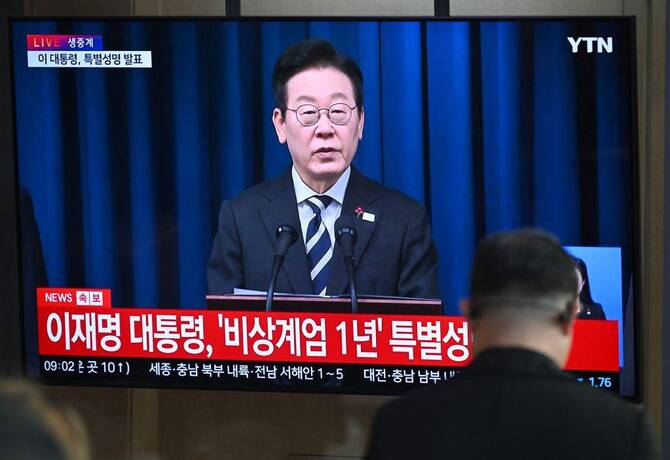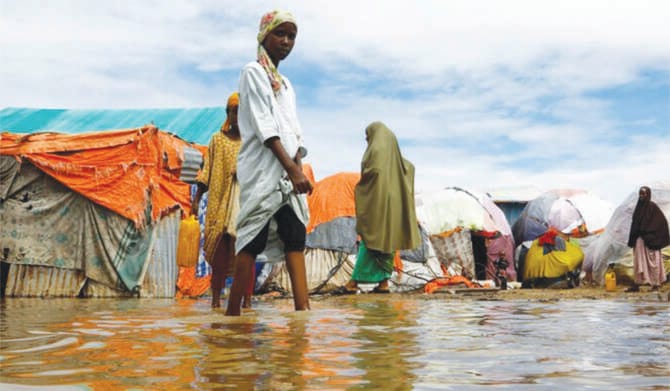More than 45,000 people have been affected by flash floods in Somalia since mid-April, the UN said, with at least four people killed in the rapidly rising waters.
The Horn of Africa is one of the regions most vulnerable to climate change, and extreme weather events are becoming increasingly frequent and intense. “Since 15 April, flash floods due to heavy to moderate rains in Somalia have affected over 45,000 people and swept away four people, including two children and a woman,” said UN humanitarian agency OCHA, in a report published on April 30.
It warned the flooding came at a time when NGOs — often the frontline responders — are “facing crippling funding reductions that have severely limited their ability to respond to emerging needs.”
It detailed that roughly 6,000 people were displaced in the Middle Shabelle region after the Shabelle River burst its banks on April 29.
It said families have sought refuge in makeshift camps on higher ground but are “facing acute shortages of food, clean water, and health care.”
“The flooding swept away homes and inundated crops, disrupting livelihoods in one of Somalia’s most agriculturally vital regions,” OCHA noted.
The day before, some 9,500 people were also displaced in central Galmudug State after light to moderate rains caused flash floods, it said. The floods come as the international humanitarian community grapples with the US decision to dismantle much of USAID, the country’s main foreign development arm.
“Currently, many humanitarian organizations in areas where the flash flooding is occurring have been forced to pause, scale back, or even close their critical programs,” OCHA noted.
Intense floods hit Somalia in 2023. More than 100 people were killed and over a million were displaced after severe flooding caused by torrential rains linked to the El Nino weather pattern.
Read More

South Korean lawmakers pass bill targeting false information despite warnings on censorship
South Korea’s liberal-led legislature on Wednesday passed a bill allowing heavy punitive damages against traditional news and Internet media for publishing “false or fabricated information,” brushing aside concerns the legislation could lead to greater censorship. Journalist groups and civil liberty advocates urged President Lee Jae Myung to veto the

US bars five Europeans it says pressured tech firms to censor American viewpoints online
The State Department announced Tuesday it was barring five Europeans it accused of leading efforts to pressure US tech firms to censor or suppress American viewpoints. The Europeans, characterized by Secretary of State Marco Rubio as “radical” activists and “weaponized” nongovernmental organizations, fell afoul of a new visa policy announced

Pope Leo XIV calls for global truce on Christmas Day
Pope Leo XIV on Tuesday called for a global truce on Christmas Day, expressing “great sadness” that “apparently Russia rejected a request” for one. “I am renewing my request to all people of good will to respect a day of peace — at least on the feast of the birth of

France condemns US visa ban imposed on ex-EU commissioner Breton
The French government condemned on Wednesday a visa ban imposed by the Trump administration on Thierry Breton, a former European Union commissioner who helped drive the EU’s Digital Services Act, which has recently targeted top US tech companies. “France strongly condemns the visa restriction imposed by the United States

